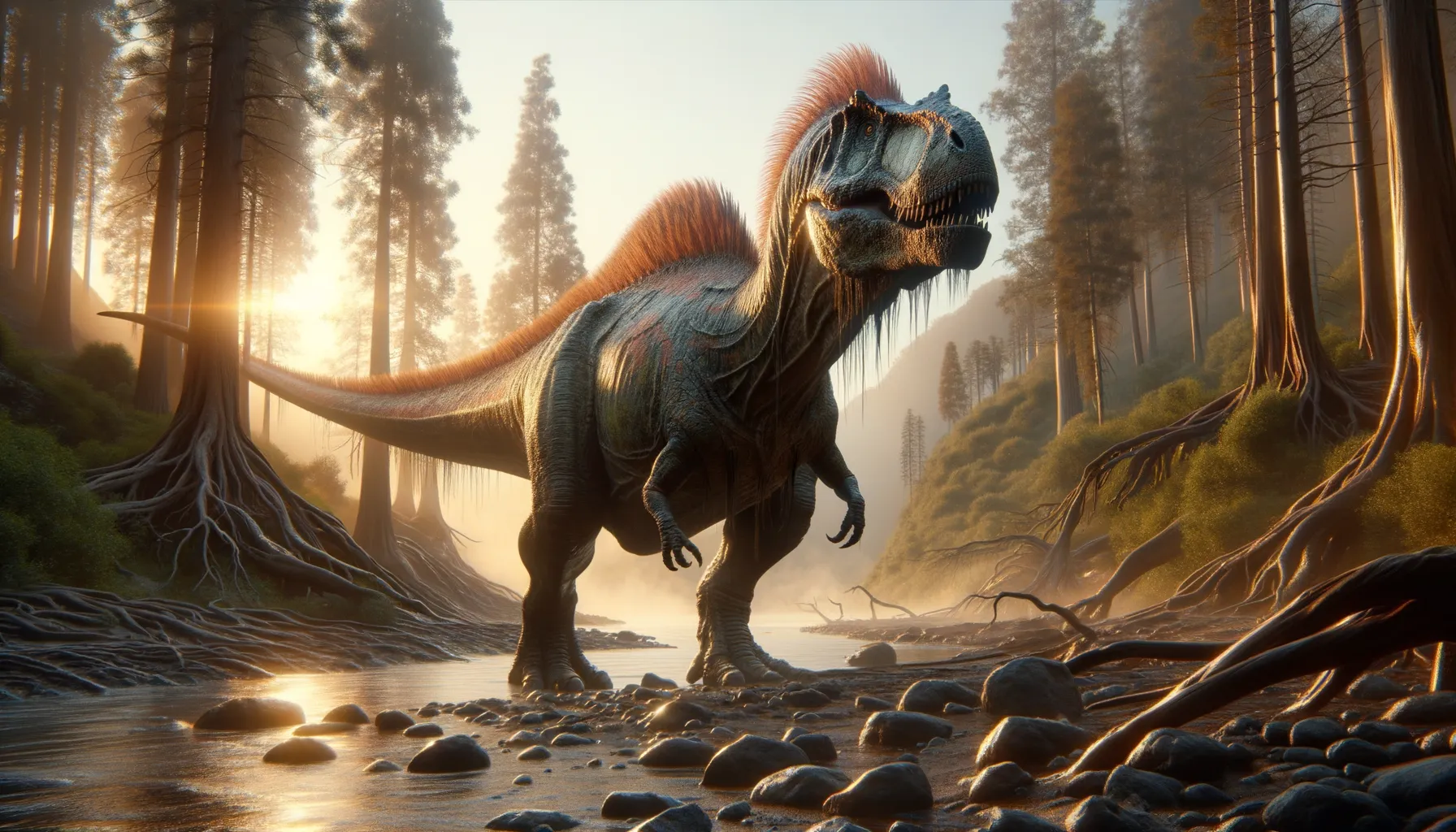
Amtosaurus
The enigma of the Late Cretaceous.
Period
Cretaceous
Length
Possibly up to 8 meters long.
Height
Estimated to have stood 3 meters tall.
Weight
Estimated around 2,000 kilograms.
Amtosaurus is a genus of dinosaur that lived during the Late Cretaceous period, approximately 70 million years ago. It is known from fragmentary remains, making its exact appearance somewhat speculative. Initially classified as an armored dinosaur, ongoing studies suggest it might be more closely related to the hadrosaur family. This confusion highlights the challenges paleontologists face in reconstructing complete profiles of extinct species from limited fossil records.
Diet
Amtosaurus was likely herbivorous, grazing on the abundant vegetation of its time. With a diet consisting mainly of plants, it may have fed on ferns, cycads, and conifers that flourished during the Cretaceous period.
Hunting
As an herbivore, Amtosaurus did not engage in hunting. Its primary challenge would have been foraging for sufficient plant matter to sustain its large body. Avoiding predators rather than hunting was likely a significant focus of its behavior.
Environmental challenges
Amtosaurus faced a range of environmental challenges, from avoiding large predators to navigating changing climates. The Late Cretaceous was a time of shifting sea levels and volcanic activity, which could have impacted its habitat. Competition for food sources with other herbivores was another significant challenge during its era.
Speed
Likely slow-moving due to its bulk.
Lifespan
Estimated to be several decades.
First discovery
Discovered in the Nemegt Formation, Mongolia.
Fun Facts
- Amtosaurus is known from fossil remains found in Mongolia, dating back to the late Cretaceous period.
- The name Amtosaurus translates to 'Amtgai lizard', where Amtgai is the location of its discovery.
- Originally thought to be an ankylosaur, recent studies have questioned its classification due to sparse fossil evidence.
- Unlike many other dinosaurs, Amtosaurus is known only from a fragment of its skull, making definitive identification tricky.
- There is some debate among paleontologists about whether Amtosaurus is a valid dinosaur genus or a nomen dubium, meaning its classification is uncertain.
- Amtosaurus lived in what is now the Gobi Desert, an area rich in dinosaur fossils.
- Despite the incomplete fossils, the discovery of Amtosaurus continues to offer insights into the diversity of dinosaur life in Asia during the Cretaceous period.
Growth and Development
The growth of Amtosaurus, like many dinosaurs, likely involved a long maturation period, possibly taking several years to reach full size. Hatchlings would have been significantly smaller than adults and required time to develop their distinctive features. Understanding the nuances of its growth is complicated by the limited fossil evidence available.
Habitat
Amtosaurus inhabited what is now Mongolia, a region characterized by a range of environments, including river systems and floodplains. During the Late Cretaceous, this area would have been lush and supported diverse plant and animal life. Amtosaurus would have thrived in areas with abundant vegetation, necessary for its large size and dietary needs.
Interaction with other species
Amtosaurus, due to its size, may have coexisted with both smaller herbivores and larger carnivorous dinosaurs. It likely played a role in seed dispersal through its diet. The presence of predators would have influenced its behavior, possibly forming herds to provide mutual protection against threats.
Natural lifespan
Amtosaurus had a lifespan that could extend several decades.
Reproduction
Reproduction was likely similar to other dinosaurs, with Amtosaurus laying eggs. Nesting behaviors could have involved selecting secure locations, as protecting young from predators would have been crucial. Information on its reproductive habits is limited due to fragmentary remains.
Social behaviour
Amtosaurus may have exhibited social behavior typical of herbivorous dinosaurs, possibly forming herds. Such social structures would have provided advantages in foraging and protection against predators. The specifics of its social interactions are challenging to pin down with current fossil evidence.
Fossil locations
Amtosaurus fossils have primarily been found in the Nemegt Formation in Mongolia. This region is well-known for its Cretaceous fossils, though Amtosaurus remains are limited. Ongoing excavation continues to unravel more about its distribution and historical presence.
